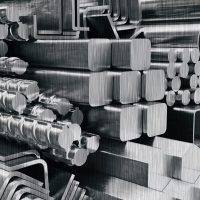Adherence to the Bangladesh National Building Code (BNBC) is essential for the construction of safe and durable buildings.
Md. Abdul Malek Sikder
Former Additional Chief Engineer, PWD.
The buildings are one of the major infrastructures of a city, providing accommodation for the basic needs of the citizens. It furnishes spaces for living, commercial activities, recreational facilities, cultural activities, sports, etc. Therefore, the buildings should be safe against any probable hazards like fire, cyclones, and earthquakes. On the other hand, the buildings should be durable and long-lasting to achieve the maximum value for the money invested.

The Importance of the Bangladesh National Building Code (BNBC) in constructing earthquake resilient buildings
Building codes are compilations of minimum technical requirements to be considered and applied by engineers and architects in the design and construction of buildings. Provisions of the building codes have been developed through continuous research and the experiences of professionals and academicians in different countries and accommodated in the building codes of their respective countries. The structural design of a building, prepared by a qualified and experienced engineer adhering to the provisions of BNBC, will ensure the structural safety of the building if constructed properly as per the structural design.
But, unfortunately, most of the existing buildings and the new buildings being constructed in Bangladesh are non-engineered, meaning they were designed and constructed without the involvement of qualified and experienced engineers.
On the other hand, not all the engineered buildings are equally safe and durable, as there is no system to ensure the minimum qualification and experience of the engineers required to execute the design and construction job properly. This could only be ensured by a robust professional registration system for engineers and architects, which is nonexistent in our country.
Above all, there should be a system to check and approve the structural design of buildings by the building regulators. Unfortunately, this system has yet to be introduced in our country.
Importance of structural health assessment and retrofitting of existing vulnerable buildings
A lack of strength and durability in an existing building may make it vulnerable to probable hazards like fire, cyclones, and earthquakes. The structural strength of a building comes from the structural design, while durability depends on the quality of construction and regular maintenance.
Probable causes of the lack of structural strength of an existing building:
- Improper structural design.
- Buildings constructed earlier, following building codes of that period, may have been updated subsequently, thus making the buildings vulnerable as per the updated code.
- Buildings constructed without following the structural design properly.
- Nonengineered practices of building construction.

Probable causes of the lack of durability of an existing building:
- Poor quality construction
- Use of low-quality construction materials.
- Lack of quality control and quality assurance systems.
Seismic assessment and retrofitting of existing buildings
The purpose of seismic assessment is to evaluate the structural capacity of an existing building against the seismic design requirements of the Building Code. There are several seismic assessment methods developed mostly by a few developed countries based on the building types and characteristics of those countries. Assessment methods developed in one country may not be equally applicable to buildings in other countries. Considering that, the Public Works Department (PWD) of Bangladesh has developed a three-tier seismic assessment method suitable for the types and characteristics of buildings in Bangladesh. The three-tier methods are as follows:
- Quick Visual Screening
- Preliminary Engineering Assessment
- Detailed Engineering Assessment
Details of the three-tier methods are available in the PWD Seismic Assessment Manuals published by PWD, Bangladesh.
Retrofitting of existing vulnerable buildings
If an existing building is found vulnerable after a detailed engineering assessment, a retrofitting program may be undertaken to restore its structural strength. The Public Works Department (PWD) of Bangladesh has also developed retrofitting techniques appropriate for the types and characteristics of buildings in our country; more information is available in the PWD Seismic Retrofit Design and Retrofit Construction Manuals published by PWD, Bangladesh.
Conclusions
To make the cities resilient against seismic hazards, it is essential to design and construct the new buildings following the provisions of BNBC. At the same time, assessment and retrofitting the existing vulnerable buildings are also necessary for safety and comfort of the citizens. Registered professional engineers may play a vital role in that endeavour. The establishment of the Bangladesh Building Regulatory Authority (BBRA) may go a long way in that direction.









